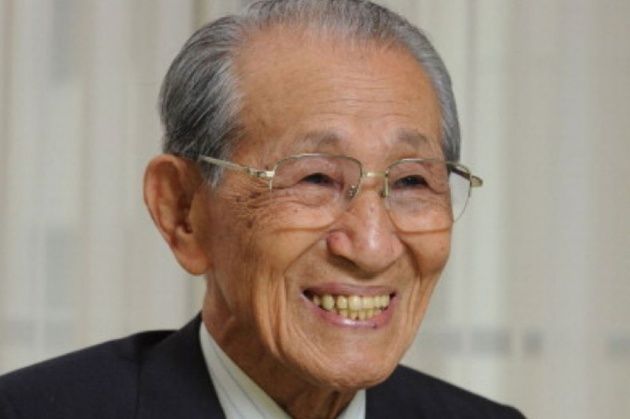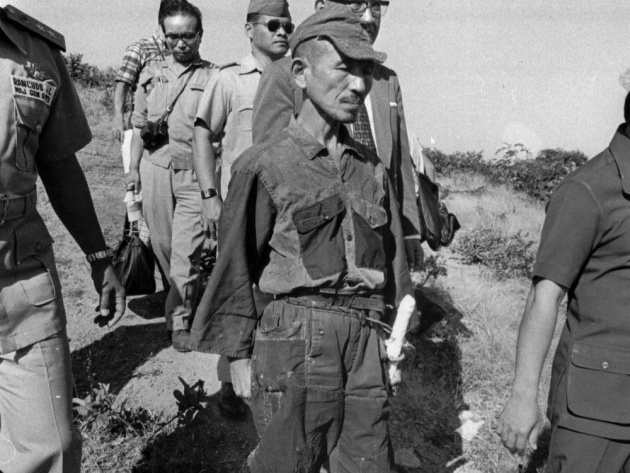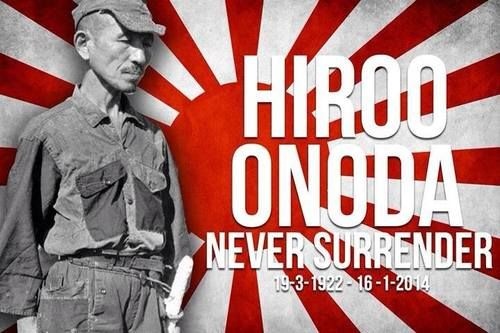
Dusk is falling on 9 March 1974, and Hiroo Onoda stands in the shadows, looking at a tent in a clearing. The tent is yellow; a Japanese flag flies above it. Onoda has traveled, cautiously and on foot, through almost unbearable heat and humidity to get here. He has made this arduous journey for a meeting that he believes could well be a trap...
30 YEARS EARLIER:
It’s 1944, and US forces are dominating the war against Japan in the Pacific. One of the many young men sent to bolster Japan’s forces is 23-year-old Hiroo Onoda, a lieutenant in an intelligence corps. The patriotic soldier is off to Lubang Island in the Philippines, where he is to conduct guerilla warfare. A year after Onoda begins his mission, the US strikes Hiroshima and Nagasaki with atomic bombs. But from his remote location, Onoda has no clue as to these devastating events. He is unaware
of Japan’s official surrender in September, so he continues to fight and hold his position on Lubang Island. Come October, the islanders try to contact his still-active troop with a leaflet announcing: “The war ended... Come down from the mountains!” But Onoda and his three brothers-in-arms are not convinced. To them it is a clever ruse by the Allies, designed to flush them out of the jungle.
SURVIVAL TACTICS:
Further attempts to contact the corps in the following months are also treated with suspicion. Leaflets printed with the surrender order from General Yamashita of the Fourteenth Area Army are dropped by plane, newspapers are left, and friends and family speak out over tannoys. But still, all are judged to be military tactics, and Onoda never believes the war has ended. As the years go by, the Japanese comrades survive on foraged fruits and, occasionally, stolen livestock. They never set up a permanent base, sleeping on the ground, in caves or outdoors for much of the time. After five years of this nomadic life, one of the group surrenders and, in 1954, another dies in a gun battle with local forces. The diminished corps continues as a two-man team, waiting for their orders.
NEVER SURRENDER:
In 1959, Onoda and his compatriot, Kozuka, are officially declared dead, and the search for them stops, despite continuing Philippine reports of soldiers holding out in the mountains. But, during another battle with Philippine forces in 1972, Kozuka, is shot and killed. Although Onoda is now entirely alone, many start to believe that he might still be alive. Norio Suzuki,a Japanese traveler, is one such believer. He heads to Lubang Island in 1974 determined to find the solitary soldier. He succeeds, but his assurances that the war has ended fall on deaf ears. The guerilla fighter will believe no one but his commander, Major Taniguchi. And so a meeting is set up, in a tent, in a jungle clearing.
THE REUNION:
From his position at the edge of the clearing, Onoda watches the tent. Nothing looks suspicious. Gripping his rifle, he steps out into the open. Suzuki is the first to greet him. As Major Taniguchi emerges from the tent, the covert fighter presents himself for duty. Taniguchi hands Onoda a packet of cigarettes before reading his orders to stand down. The lone soldier stands in disbelief. Shocked that his nation surrendered, and staggered by the knowledge of the years he has wasted, Onoda thinks of his friends who died in the jungle so pointlessly. Stunned and dismayed, he unloads his rifle.
HOMECOMING:
On 10 March, Onoda steps out of the jungle. The past 30 years have seen the death of at least 30 locals at the hands of his corps. Onoda officially surrenders to the Philippine President Marcos, who pardons him for his crimes. Back in Japan, Onoda is hailed a hero, and over 4,000 citizens welcome him home at Tokyo Airport. But his homeland is much changed and, in 1975, Onoda leaves for a ranch in Brazil. Nine years later, he returns to Japan, setting up a camp for children: the Onoda Nature School. On 17 January 2014, he dies of heart failure, aged 91.
Second Lieutenant Hiroo Onoda (The Man Who Didn't Surrender)
Posted on at



